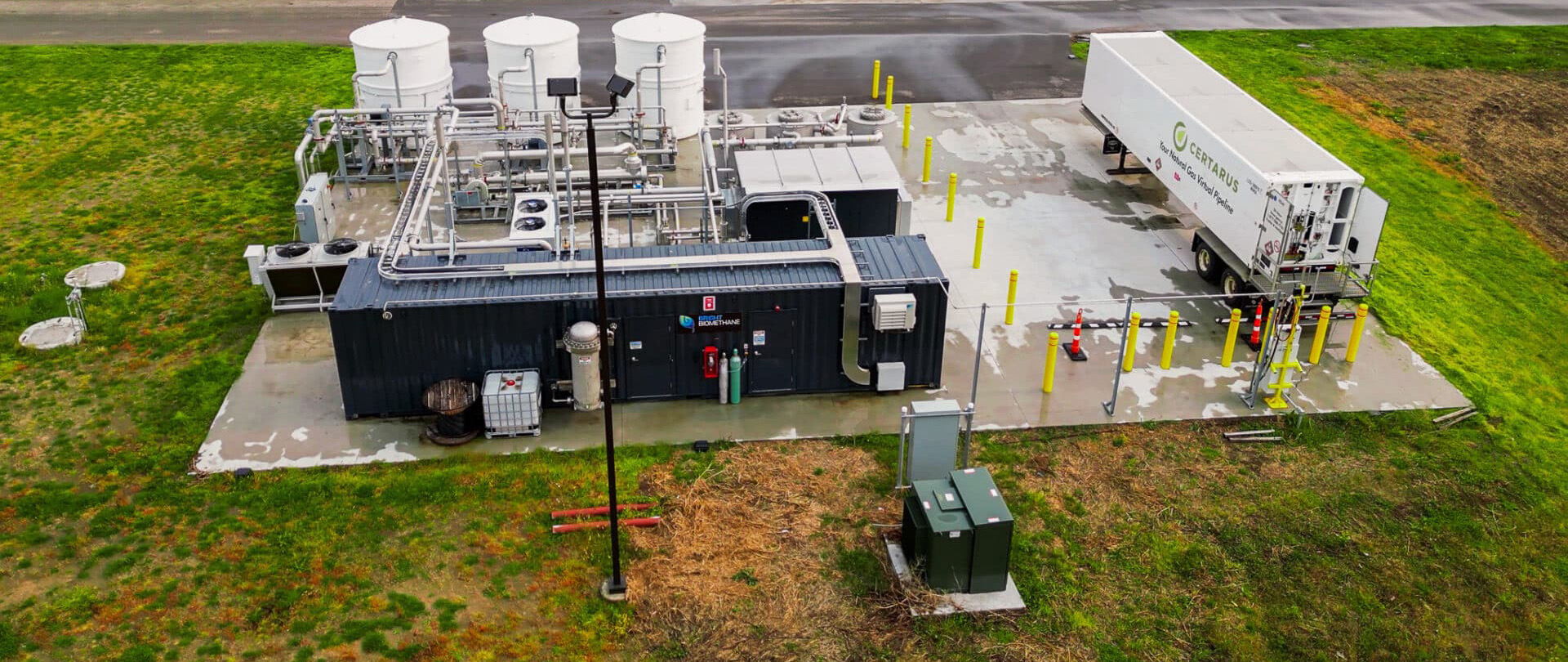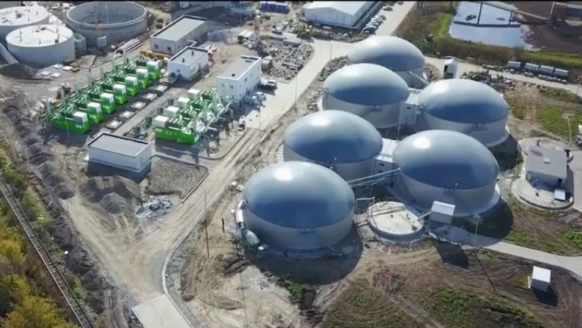
News
We'll get back to you as soon as possible.
The Ultimate Guide to Biomethane Plant Cost: Investment, ROI, and Key Factors in 2025
For investors, energy companies, and agricultural enterprises, understanding the complete picture of biomethane plant cost is the critical first step towards a profitable and sustainable venture. Biomethane, also known as renewable natural gas (RNG), represents a compelling opportunity to turn organic waste into a clean, grid-injectable, and transportable fuel. However, the initial investment can be significant. This comprehensive guide breaks down the capital expenditure (CAPEX) and operational expenditure (OPEX), explores the factors influencing the price tag, and provides a clear framework for evaluating the return on your investment.
Navigating the financial landscape of a biomethane facility requires more than just a bottom-line number. It demands a deep dive into the technology, feedstock logistics, and the evolving global incentives that make these projects viable.

Deconstructing the Biomethane Plant Cost: CAPEX and OPEX
The total biomethane plant cost is bifurcated into two main categories: the initial, one-time capital expenditure and the recurring operational costs.
Capital Expenditure (CAPEX): The Upfront Investment
CAPEX encompasses all the expenses required to get the plant from the drawing board to commercial operation. For a typical 100 Nm³/h plant (approximately 240 standard cubic feet per minute), the total CAPEX can range from $2 million to $6 million, heavily dependent on location, scale, and technology choices. Here’s a detailed breakdown:
Feedstock Pre-treatment Equipment: Before anaerobic digestion, feedstock often needs preparation. This includes reception pits, pasteurizers (to meet hygiene standards), shredders, and mixers. The complexity and cost of this stage depend on the heterogeneity of your feedstock (e.g., agricultural waste vs. source-segregated food waste).
Anaerobic Digestion (AD) System: The heart of the plant. This includes the digesters themselves (often large, heated tanks), agitators, heating systems, and insulation. Larger tanks and more robust materials (e.g., stainless steel vs. coated carbon steel) escalate the biomethane plant cost.
Biogas Upgrading System: This is where biogas (~60% methane, ~40% CO₂) is purified into pipeline-quality biomethane (>96% methane). This is a major cost component. Key technologies include:
Membrane Separation: A popular, energy-efficient option with moderate capital and operational costs.
Water Scrubbing: A robust and well-established technology, but can have higher water and energy consumption.
Pressure Swing Adsorption (PSA): Effective and widely used, utilizing zeolites to separate methane from CO₂.
Chemical Scrubbing: Highly efficient but involves handling chemical solvents.
The choice of upgrading technology significantly impacts both CAPEX and long-term OPEX.Gas Grid Injection or Compression Unit: Connecting to the natural gas grid requires a pressure booster station, odorization, and metering equipment, which can be costly. If the gas is for vehicle fuel (Bio-CNG/LNG), a high-pressure compression and storage system is needed instead.
Digestate Treatment and Storage: The nutrient-rich byproduct of digestion (digestate) must be stored and often processed (e.g., liquid-solid separation) to be sold or used as fertilizer. Storage tanks and separators add to the overall capital outlay.
Civil Works, Engineering, and Permitting: Site preparation, construction, civil engineering, and the often-overlooked costs of environmental permits and grid connection agreements are substantial.
Operational Expenditure (OPEX): The Ongoing Costs
A realistic financial model must account for the annual costs of running the facility. Key OPEX elements include:
Feedstock Supply: The single largest recurring cost for many plants. This includes purchasing or contracting for feedstock like energy crops, manure, or food waste.
Labor: Skilled personnel are required for daily operation, maintenance, and management.
Maintenance and Spare Parts: Regular servicing of mechanical agitators, pumps, and the sensitive upgrading equipment is crucial for high uptime.
Energy Consumption: The plant itself consumes electricity and heat for heating digesters, running pumps, and powering the upgrading system. A well-designed plant will minimize this parasitic load.
Insurance, Administration, and Digestate Management: These "soft" costs are essential for long-term, compliant operation.

Key Factors Drastically Influencing Your Biomethane Plant Cost
Why is there such a wide range in reported costs? Several variables are at play:
Plant Capacity and Scale: Larger plants benefit from economies of scale. The cost per unit of gas produced is generally lower for a 500 Nm³/h plant than for a 100 Nm³/h facility.
Feedstock Type and Availability: Homogeneous feedstocks like maize silage are easier to process than mixed municipal solid waste, which requires extensive and expensive pre-treatment. Local, cheap, or negatively-priced feedstock (e.g., tipping fees for food waste) dramatically improves project economics.
Technology Selection: As mentioned, the choice between membrane separation, water scrubbing, or PSA for biogas upgrading has a direct and significant impact on both the initial biomethane plant cost and its long-term efficiency and maintenance expenses.
Site-Specific Conditions: Is the land flat or sloped? How far is the grid connection point? What are the local labor rates and environmental regulations? All these factors can cause costs to vary by region.
End-Use of Biomethane: The revenue model is a key determinant of viability. Injecting into the grid often requires meeting stringent gas quality standards, while using the gas for combined heat and power (CHP) on-site may involve lower purification costs but also lower revenue.
The ROI Perspective: Balancing Biomethane Plant Cost with Revenue Streams
A high biomethane plant cost can be justified by strong, diversified revenue streams:
Biomethane/RNG Sales: Sold under long-term contracts to gas utilities or as transportation fuel, often at a premium to fossil natural gas.
Green Certificates (e.g., RINs in the US, Guarantees of Origin in Europe): These tradable certificates, which prove the renewable origin of the gas, can form the majority of a project's income.
Digestate Sales: The nutrient-rich digestate can be processed and sold as a sustainable biofertilizer, creating an additional revenue stream.
Tip Fees: For plants processing organic waste, accepting waste can generate tipping fee income.
Government Incentives and Carbon Credits: Grants, feed-in tariffs, and tax incentives can significantly improve the internal rate of return (IRR).
Choosing the Right Technology Partner to Optimize Cost
Selecting an experienced international bio-gas upgrading equipment manufacturer is paramount. A reliable partner will not only provide high-quality, efficient upgrading technology but will also offer:
Accurate CAPEX and OPEX estimates.
Performance guarantees on gas quality and recovery rates.
Comprehensive service and maintenance support to minimize downtime.
Proven references from similar projects.
When evaluating suppliers, look for a track record of successful projects that match your scale and feedstock profile. The cheapest upfront offer is not always the most cost-effective over the plant's 15-20 year lifespan.
While the biomethane plant cost represents a substantial capital commitment, it is a strategic investment in a decarbonized future. By thoroughly understanding the breakdown of CAPEX and OPEX, carefully analyzing the key cost drivers, and securing robust revenue streams, project developers can build a compelling business case. The success of a biomethane project hinges on meticulous planning, smart technology selection, and a clear-eyed view of the financials from feedstock to final product. With the global push for renewable energy, the time to invest in understanding and developing biomethane facilities is now.
Frequently Asked Questions (FAQs) on Biomethane Plant Cost
Q1: What is the typical payback period for a biomethane plant investment?
A1: The payback period can vary widely but typically ranges from 5 to 10 years. This is highly dependent on factors such as the scale of the plant, the cost and type of feedstock, the efficiency of the chosen upgrading technology, and, most critically, the revenue from gas and certificate sales. A plant with access to low-cost manure and high-value RIN credits in the US may see a faster return than a plant relying on purchased energy crops in a less-subsidized market.
Q2: What are the main ways to reduce the capital cost of a biomethane plant?
A2: Key strategies to reduce CAPEX include:
Standardizing Design: Working with a technology provider that offers modular, standardized plant designs can lower engineering and construction costs.
Optimizing Scale: Building a plant that optimally matches the available feedstock supply avoids over-sizing and under-utilization.
Technology Selection: Choosing a biogas upgrading system that offers a good balance of capital cost, operational efficiency, and maintenance requirements for your specific context.
Thorough Feasibility Studies: Investing in a detailed pre-project study helps avoid costly surprises and redesigns during construction.
Q3: Is it more cost-effective to build a new plant or retrofit an existing biogas plant for biomethane production?
A3: Retrofitting an existing biogas plant (e.g., one currently using its gas for a CHP engine) is almost always more cost-effective. The major savings come from the fact that the anaerobic digestion infrastructure and feedstock supply chain are already in place. The primary new biomethane plant cost in a retrofit scenario is the biogas upgrading system and the grid injection/compression unit, which can reduce the total project cost by 40-60% compared to a greenfield project.
Q4: What financing options are available for a biomethane project?
A4: Financing can be secured through various channels:
Project Finance: Debt financing secured against the project's future cash flows.
Green Bonds/Loans: Specifically designed for environmentally sustainable projects.
Government Grants and Subsidies: Many countries and regions offer non-repayable grants or low-interest loans for renewable energy projects.
Corporate Investment: Companies investing to meet their own ESG (Environmental, Social, and Governance) targets.
Private Equity: Investors seeking returns in the growing green energy sector.
Q5: Beyond the core equipment, what are the most commonly overlooked costs in a biomethane plant budget?
A5: Project developers often underestimate:
Grid Connection Fees: The cost paid to the gas grid operator for the physical connection and reinforcement of the local network can be very high and is often a surprise.
Permitting and Legal Fees: The process of securing environmental, building, and operational permits can be lengthy and expensive.
Initial Digestate Management: The cost of storing and establishing a market for the digestate fertilizer is sometimes not fully budgeted.
Spare Parts Inventory: Maintaining a critical stock of spare parts to minimize downtime is an essential but often overlooked operational cost.
